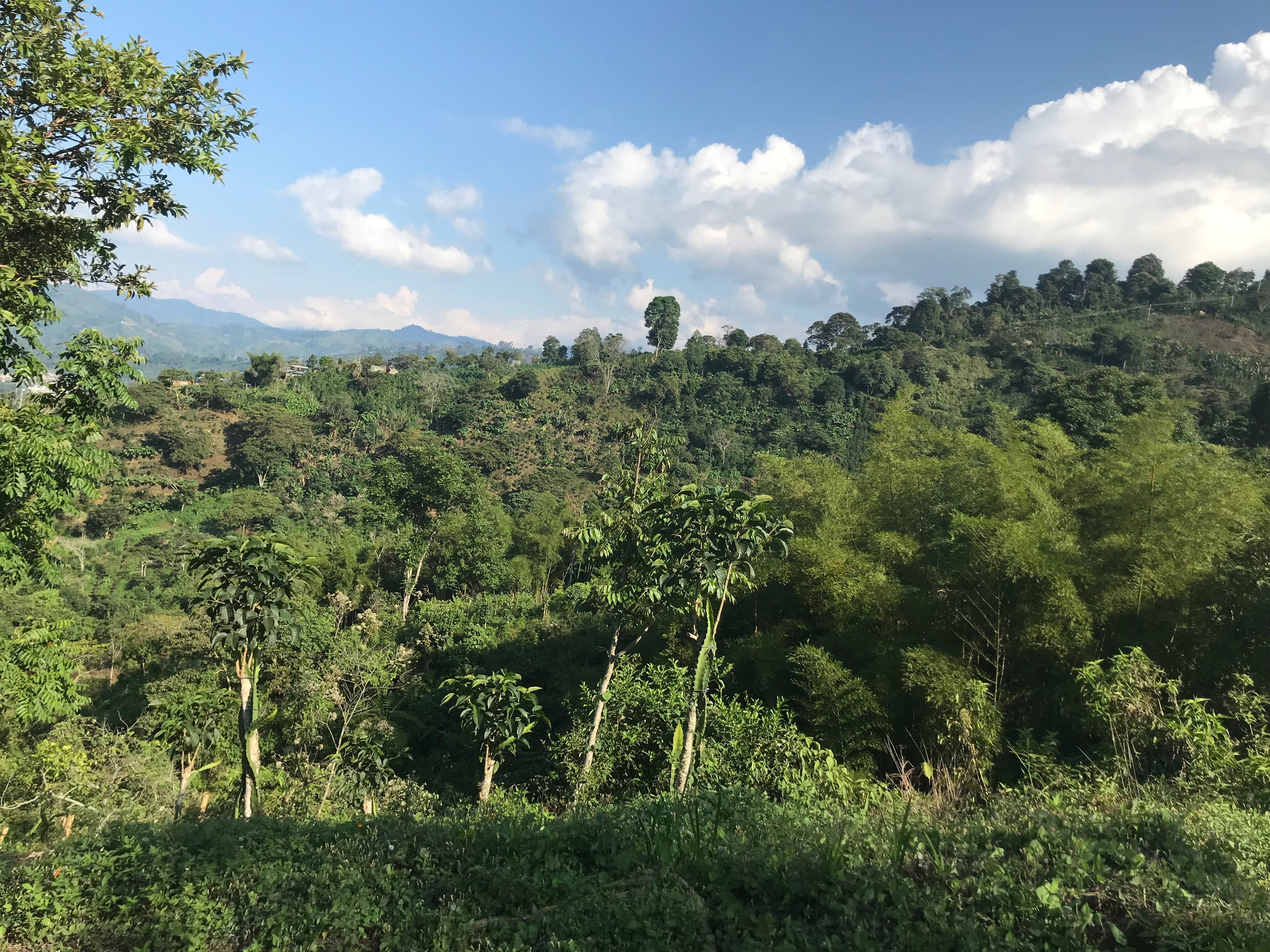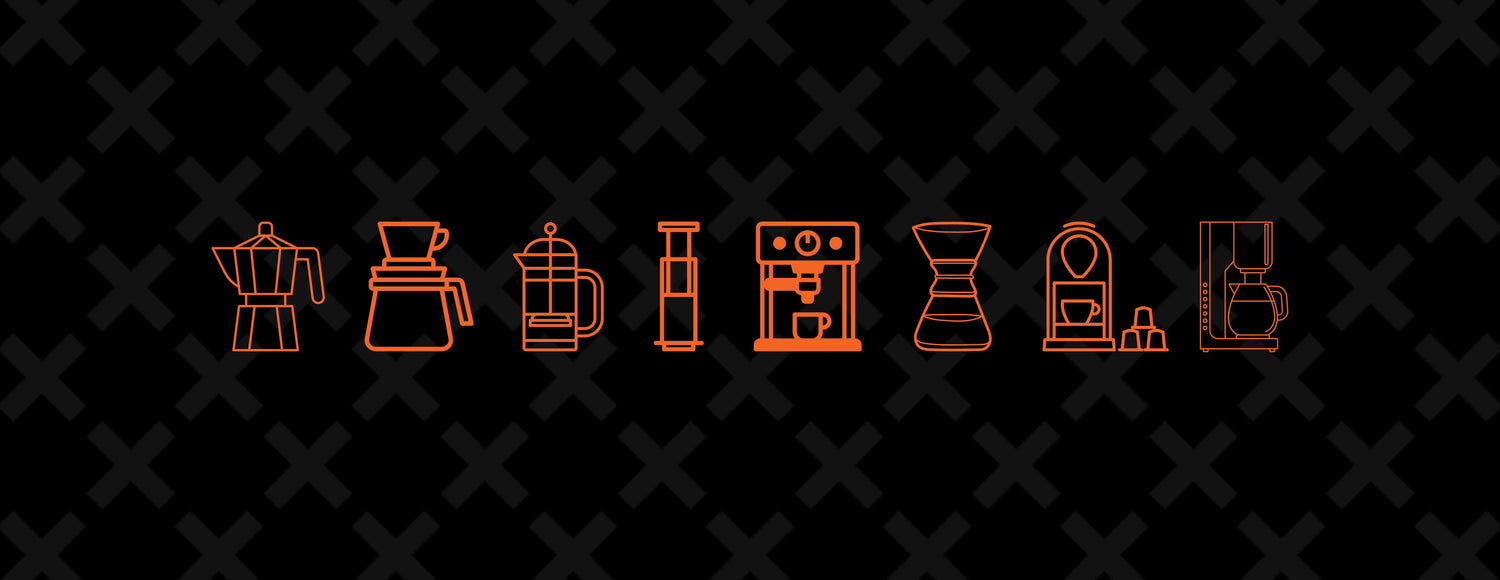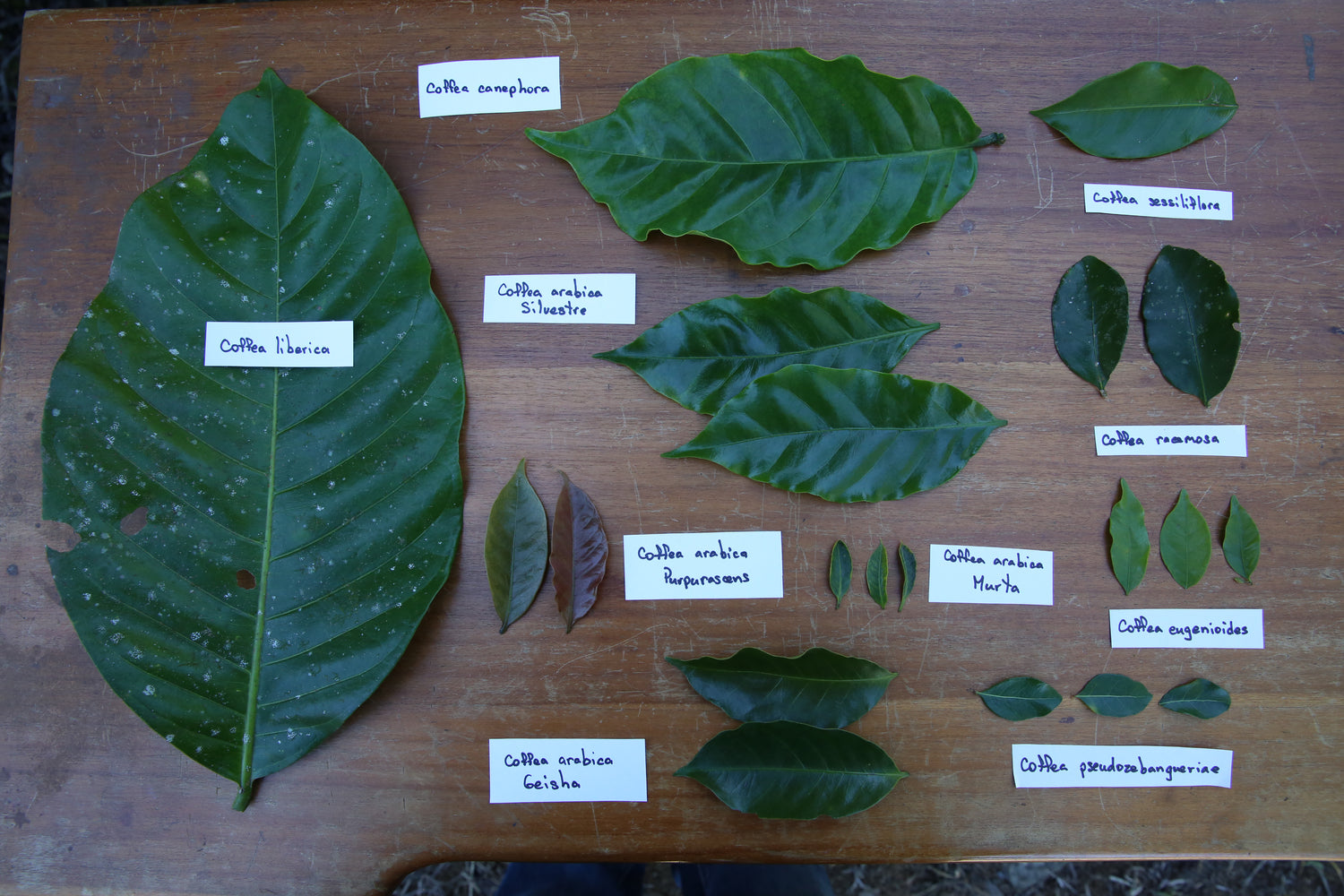
How Does Coffee Grow?
How often have you stopped to consider the natural world that exists in the kitchen and throughout your house? You are aware the cotton in your underpants came from a field, right? And that the rubber in your shoes was once in a tree! How about the white or black pepper beside the salt, could you pick that plant out of a lineup? What about mustard? Hands up anyone who knows about the mustard plant! Chances are its seeds are in the kitchen of everyone reading this blog. It is easy to forget the natural origins of these everyday items and many more around us, and coffee is no different. So how much do you know about this beautiful plant? Well, read on to discover more.

Let's start with a small bit of science and history.
Coffee comes from a genus of plants known as Coffea, which is a flowering plant from the Rubiaceae family. In this genus, there are over 120 different species of coffee plant. However, only two of them, dominate our world—Coffea Arabica and Coffea Canephora, more commonly known by the name of one of its varieties, Robusta. The origins of the plant we consume in copious amounts today are in the forests of Southeast Ethiopia. From here it spread throughout Africa and the Middle East and outwards across the globe. There are many legends with varying degrees of truth attributed to how this happened. But now is not the time to indulge in incorrect information disguised as fact. What is undeniable, though, is that European colonial superpowers were the driving force behind its global expansion.
So, what are the two main species?
Coffea Arabica
- Accounting for approximately 70% of coffee consumed globally, and 100% of your favourite FiXX blends, arabica is known for its high-quality flavours and aromas. The earliest cultivated species of Coffea, this high-grown plant is usually farmed between 1,300-1,500masl and likes a moderate temperature of 15-24C. Varieties of arabica include Bourban, Typica, Caturra and Java, to name just a few.
Coffea Canephora (Robusta)
- Robusta, as the name suggests, is the hardier and more robust of the two species as it is more resistant to disease and parasites. It can be grown in lower regions withstanding higher temperatures, making it easier and cheaper to cultivate. However, the Coffea Canephora yields a lower quality bean with a more bitter taste, albeit with higher caffeine content than arabica. Robusta is primarily used in instant coffees or blends.
But what do they look like?
The two dominant species of the Coffea plant, Arabica and Canephora (Robusta) would be characterised as trees and have the ability to grow up to 9 meters. But when farmed, they are generally cut short to create healthy bushes. The reasons for this is simply to make harvesting easier and encourages the plants to focus their energy on producing fruit. Each evergreen tree is covered with beautiful, waxy dark green leaves that grow opposite each other in pairs. After three to four years, the tree will begin to mature and flower for the first time. At this point, where the branches join, clusters of small, heavily scented, white flowers will grow. These delicate and dainty star-shaped flowers have a sweet aroma to attract pollinating insects.

What are the cherries like?
Six to eight weeks later, when pollination is complete, the fruit will begin to develop where the flowers once blossomed. Firstly an unripe green, cherry-like fruit will appear. Then, depending on the variety will turn a vibrant red, yellow, orange and sometimes pink. All the cherries naturally contain caffeine which is actually used as a pest deterrent. However, the coffee borer beetle - one of the worlds most destructive Coffea plant pests, survives on caffeine, much like a primary school teacher.

What about the beans?
Inside each cherry, is the good stuff, the coffee bean. Although, technically it's not a bean, in fact, it's two seeds. Occasionally, the seed won't split, and you'll find a large, round, pea-shaped seed. This is called a peaberry, and it occurs in about 5% of cherries. Some people believe these naturally occurring mutations are actually sweeter and more flavoursome than your regular bean, and will manually sort them out for specialist markets. In total, it can take five to seven years for a tree to produce a harvest worthwhile for commercial production. So its best you know what you're doing.

And where does it grow?
Coffea plants thrive between the tropics of Cancer and Capricorn, where the sun shines directly overhead, for long periods and the climate is hot and humid. So you can put away your shovel if you're in Ireland. This area is sometimes referred to as the Coffee Belt or Bean Belt. It includes large parts of Africa, Asia, and Latin America where coffee production plays an integral role in agricultural economies. For a coffee plantation to be prosperous, the soil must have good water drainage, be slightly acidic and nutrient-rich.
The growth of the plant and the resulting flavour of the cup is influenced by many factors. The elevation of the farm, the amount of rainfall and shade the plant receives all contribute to its characteristics. Even the surrounding environment and neighbouring plantations can have an influence on the end taste of the coffee bean. Essentially, each farm becomes its own micro-climate, and much like wine vineyards, the same fruit grown in different locations can produce wildly different flavour profiles. How the cultivated bean is then processed, has another significant effect on the taste. But that's a conversation for another day.
Guess I can't grow coffee in Ireland then.
Actually, you can, well, kind of. I mean you could grow a pineapple in Ireland too if you really wanted to. But it would hardly be worth the effort or energy bill at the end of it. They do, however, make beautiful pot-plants. In fact, we have one growing in our office.

Of course, it needs lots of direct sunlight and to be kept in as warm a place as possible, and the chances of it bearing enough fruit to get a cup of coffee out of it, are slim, to put it mildly. If our little plant does offer up any coffee beans, it will be the most exclusive, small-batch, single-origin coffee ever produced! Probably best then that you don't hold your breath for FiXX Dublin appearing online anytime soon. So if you haven't already, put away your shovel and just head to our collection page for all your coffee needs.
Thanks for reading.
Kevin





